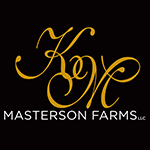Western pleasure is one of the more controversial classes in the industry. Many critics talk about how it forces trainers to make horses move more mechanically and unnatural. But, just like in elite sports like basketball and football, only a select few can compete at the highest level. Not everyone can be Michael Jordan or Tom Brady.
The often rare and elite talent needed to win in the western pleasure on the national level leads to many trainers forcing a less talented horse to do more than their physical capabilities. Unfortunately, this often leads to horses developing bad habits like overly canted lopes, bobbing topline, stilted walks, skating lopes, and bad self-carriage, among others.
GoHorseShow asked trainers for tips on fixing bad western pleasure training habits. Besides judges not rewarding this type of movement, the most obvious solution is getting the horses to move forward while ensuring they have rhythm and cadence. However, changing these habits is difficult; it takes time and patience.
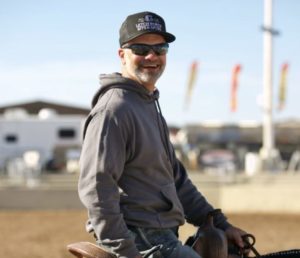 Brad Jewett – We all want self-carriage. I am not a fan of the horse that “skates” across the ground at the lope. In other words, one that is probably overcanted and has a semblance of a three-beat gait at the lope. These horses have a tough time adding an additional class to their repertoire at the horse show. All of the issues you mentioned above basically have no cadence. The horses with these issues have been a square peg forced into a round hole. I spend weeks on these horses, walking and trotting circles, breaking loose their ribcage, and teaching them to steer.
Brad Jewett – We all want self-carriage. I am not a fan of the horse that “skates” across the ground at the lope. In other words, one that is probably overcanted and has a semblance of a three-beat gait at the lope. These horses have a tough time adding an additional class to their repertoire at the horse show. All of the issues you mentioned above basically have no cadence. The horses with these issues have been a square peg forced into a round hole. I spend weeks on these horses, walking and trotting circles, breaking loose their ribcage, and teaching them to steer.
All of this helps to tear that wall down from the barrier created by being that pleasure horse. That’s where it starts for me. A horse must have rhythm naturally, no matter how long or short the stride is. When I have to create a rhythm for the horse, it is tough to teach them the trail. For a horsemanship horse, we like our horses to have self-carriage because we don’t want to see that rider having to kick every stride or push their heads every stride. We have many great pleasure trainers and pleasure horses in our industry; as a whole, they all do an excellent job of getting them set up to move into a comprehensive program.
 Melissa Shetler – This is a great topic. First off, I love my western pleasure-based all-around horses. They have great buttons, are very broke, and tend to be obedient. Those qualities make those horses amazing all-arounders. So, I thank the western pleasure trainers for providing such a solid base for us to add to. This has been a key to many of my successful all-around horses.
Melissa Shetler – This is a great topic. First off, I love my western pleasure-based all-around horses. They have great buttons, are very broke, and tend to be obedient. Those qualities make those horses amazing all-arounders. So, I thank the western pleasure trainers for providing such a solid base for us to add to. This has been a key to many of my successful all-around horses.
But, it does come with some habits that we, as all-around trainers, need to change to fit our needs. For example, horses that tend to overcant and push too far off the leg can be harder to get straight in the body for teaching lead changes, etc. I find that forward is a great fix for many things. Horses trained to move forward freely, while still steering and listening to leg cues are the ones we succeed the most with. They need to know that forward is allowed, and even encouraged.
The best horsemanship horses can be pushed forward yet return to our leg and hand aids. Comfort level is critical for these horses. They need to know they aren’t doing anything wrong by going more forward than they are used to. I do a lot of hand galloping with all of mine. I also use many of our show horses to pony other horses. Long trotting (once they learn this with control) is very helpful. It frees up the movement at all gaits. Just like loping forward, trotting freely while guiding and responding to leg is critical.
Again, these horses are my favorite to mold into amazing all-around horses. So, it’s worth the change in training methods for me to help them adapt to what we do.
 Austin Gooding – It all goes back to the basics; after all, that’s what a pleasure horse should be; one that specializes in the basics. I find we have gotten so good at gaining control of specific body parts of the horses so early that a lot of them never learn to function on their own without the rider placing their feet; consequently, our horse’s timing and self-carriage is off, or they’re front and back ends aren’t functioning as one, is maybe a better way to put it. So, we’ll work on self-carriage, guiding, and a willing attitude. One of our favorite things to do with these broke young horses is to go on and teach them western riding. It helps get all their body parts back in line and open their legs up.
Austin Gooding – It all goes back to the basics; after all, that’s what a pleasure horse should be; one that specializes in the basics. I find we have gotten so good at gaining control of specific body parts of the horses so early that a lot of them never learn to function on their own without the rider placing their feet; consequently, our horse’s timing and self-carriage is off, or they’re front and back ends aren’t functioning as one, is maybe a better way to put it. So, we’ll work on self-carriage, guiding, and a willing attitude. One of our favorite things to do with these broke young horses is to go on and teach them western riding. It helps get all their body parts back in line and open their legs up.
We’re seeing more emphasis on the correctness of gates rather than just slow at the big shows this year, which is a step in the right direction. All the pleasure horses are so well trained anymore the flaws the public use to bash the modern pleasure horse could disappear overnight with minor adjustments in our showing presentation. Most of us are just riding the brakes too much in the show ring, probably not because we need to, but because we can.
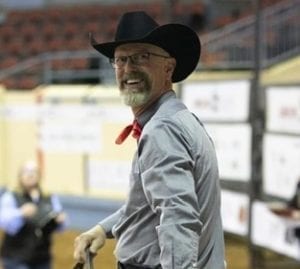 Kelly McDowall – I think they first need to get comfortable going forward to start the western riding and trail and horsemanship. I tend to do a miniature course, horsemanship, and western riding practice every time I ride them, so they quickly learn to do all of these things without stressing out about them. The lead change is the hardest thing to teach, but if I do a little each day and it becomes a routine, it can be accomplished without much stress.
Kelly McDowall – I think they first need to get comfortable going forward to start the western riding and trail and horsemanship. I tend to do a miniature course, horsemanship, and western riding practice every time I ride them, so they quickly learn to do all of these things without stressing out about them. The lead change is the hardest thing to teach, but if I do a little each day and it becomes a routine, it can be accomplished without much stress.
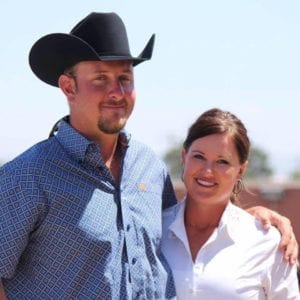 Jenn Wheeler – We usually give them something fun to do, like trail and changing leads. Lots of forward motion, teach them to long trot on a loose rein and stretch them out. We have a creek behind our ranch, so when we’ve got some super mechanical/sulled-up ones, we will take them out, let them be horses, and do some creek riding. A lot of horses we’ve gained from strict pleasure programs don’t know how to turn, side pass, or two-track, so we tend to do a lot of drills to get them to open up their shoulders more. Many horses like a pole or two to go over, or a pattern with some cones. It helps make them feel like it’s fun and they aren’t in trouble. Sometimes, I’ll put a horse back in a snaffle or a side pull and get their necks up and shoulders up, make them take a giant soft stride behind, helps get them to move out more naturally, but still stay correct for the all-around.
Jenn Wheeler – We usually give them something fun to do, like trail and changing leads. Lots of forward motion, teach them to long trot on a loose rein and stretch them out. We have a creek behind our ranch, so when we’ve got some super mechanical/sulled-up ones, we will take them out, let them be horses, and do some creek riding. A lot of horses we’ve gained from strict pleasure programs don’t know how to turn, side pass, or two-track, so we tend to do a lot of drills to get them to open up their shoulders more. Many horses like a pole or two to go over, or a pattern with some cones. It helps make them feel like it’s fun and they aren’t in trouble. Sometimes, I’ll put a horse back in a snaffle or a side pull and get their necks up and shoulders up, make them take a giant soft stride behind, helps get them to move out more naturally, but still stay correct for the all-around.
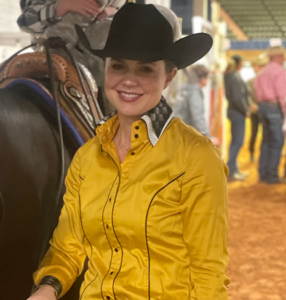 Jamie Dowdy – Most of the time, a horse, in my opinion, develops anxiety in certain situations and muscle atrophy from practicing in confined spaces. I have a tendency, even on my show horses, to want to put them in as much as a natural setting to find their natural way of going. I might not have the perfect facilities, but I have pastures and cattle. I promise a horse will figure out how to carry itself going up and down hills.
Jamie Dowdy – Most of the time, a horse, in my opinion, develops anxiety in certain situations and muscle atrophy from practicing in confined spaces. I have a tendency, even on my show horses, to want to put them in as much as a natural setting to find their natural way of going. I might not have the perfect facilities, but I have pastures and cattle. I promise a horse will figure out how to carry itself going up and down hills.
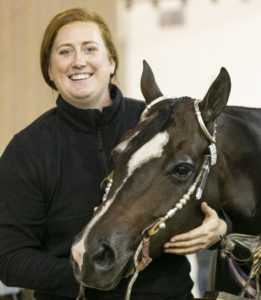 Chelsea Carlson – When I’ve received horses in training that were “overdone,” my go-to is usually to push them forward. Get their legs reaching and matching stride, front and back. Then, have them find their rhythm at a sitting trot and forward lope—lots of counter-cantering, bending/flexing, and diagonal two-tracking work. In my experience, once you get horses to open their legs up and reintroduce natural carriage, going slow again is much easier and more comfortable for them. Not to mention they enjoy it more.
Chelsea Carlson – When I’ve received horses in training that were “overdone,” my go-to is usually to push them forward. Get their legs reaching and matching stride, front and back. Then, have them find their rhythm at a sitting trot and forward lope—lots of counter-cantering, bending/flexing, and diagonal two-tracking work. In my experience, once you get horses to open their legs up and reintroduce natural carriage, going slow again is much easier and more comfortable for them. Not to mention they enjoy it more.
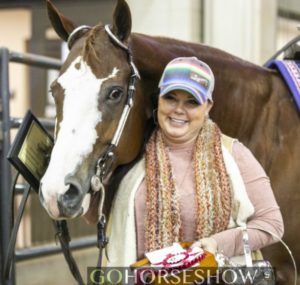 Ashley Dunbar-Clock – Honestly, I have taken these horses and started to gallop them and teach them other events, then gone back to the pleasure. I think taking them away from just doing the pleasure gives them a mental break from it.
Ashley Dunbar-Clock – Honestly, I have taken these horses and started to gallop them and teach them other events, then gone back to the pleasure. I think taking them away from just doing the pleasure gives them a mental break from it.
 Margaux Tucker – I do a lot of pole work. Even if the horse isn’t going to be an excellent trail horse, I find it helps ‘unlock’ a bunch of sticky parts. I also like to do lots of galloping and long trotting, allowing their necks to come above level and use full motion throughout the body.
Margaux Tucker – I do a lot of pole work. Even if the horse isn’t going to be an excellent trail horse, I find it helps ‘unlock’ a bunch of sticky parts. I also like to do lots of galloping and long trotting, allowing their necks to come above level and use full motion throughout the body.
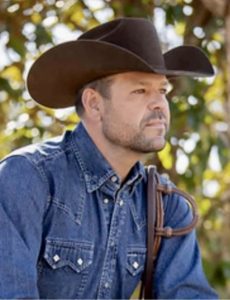 Jimmy Daurio – In my experience with those horses, I make them go forward. Teach them to change leads and start working them over poles.
Jimmy Daurio – In my experience with those horses, I make them go forward. Teach them to change leads and start working them over poles.
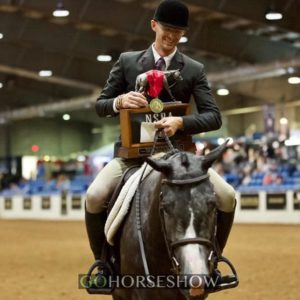 Julian Harris – A soft, fat snaffle, draw reins, and lots of posting trot and forward. Visualize a pasture-quality pace and reconnect your horse from back to front.
Julian Harris – A soft, fat snaffle, draw reins, and lots of posting trot and forward. Visualize a pasture-quality pace and reconnect your horse from back to front.
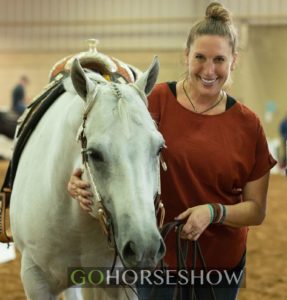 Megan Vanderslice – Gallop. Gallop. Gallop. You can fix a lot by going forward. You teach them to shape, use their body, and, most importantly, confidence. I make everything gallop. Some are scared initially, but we pet them and teach them it’s okay.
Megan Vanderslice – Gallop. Gallop. Gallop. You can fix a lot by going forward. You teach them to shape, use their body, and, most importantly, confidence. I make everything gallop. Some are scared initially, but we pet them and teach them it’s okay.




